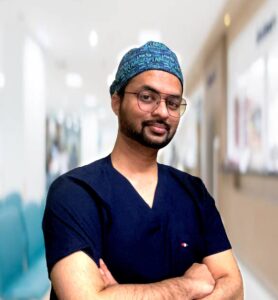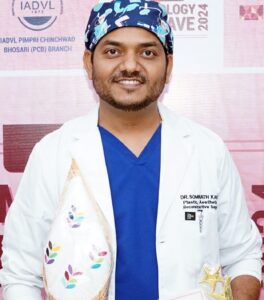-
Stimulation with Growth Factors
Stimulation with Growth Factors: Unlocking the Secrets of Cellular Regeneration
In the realm of biomedical science, growth factors have emerged as pivotal players in the processes of cell growth, differentiation, and tissue repair. These naturally occurring proteins are crucial for various physiological functions and have gained significant attention in regenerative medicine and therapeutic applications.
Table of Contents
ToggleIn this article, we will explore the fascinating world of growth factors, how they work, their applications, and address some frequently asked questions to provide a comprehensive understanding of this vital topic.
What Are Growth Factors?
Growth factors are proteins that stimulate cellular processes such as proliferation, differentiation, and survival. They act as signaling molecules that bind to specific receptors on the surface of target cells, initiating a cascade of biochemical events that lead to various cellular responses.
Growth factors are essential in many biological processes, including embryonic development, wound healing, and tissue regeneration. There are several types of growth factors, each with unique functions.
For instance:
- Epidermal Growth Factor (EGF): Promotes cell growth and differentiation in epithelial tissues.
- Platelet-Derived Growth Factor (PDGF): Stimulates the proliferation of connective tissue cells and is crucial for wound healing.
- Vascular Endothelial Growth Factor (VEGF): Plays a vital role in angiogenesis, the formation of new blood vessels.
- Fibroblast Growth Factor (FGF): Involved in wound healing and tissue repair by promoting fibroblast activity.
How Do Growth Factors Work?
Growth factors exert their effects by binding to specific receptors on target cells. This binding activates intracellular signaling pathways that alter gene expression and cellular behavior. The process can be summarized in a few key steps:
- Binding: A growth factor binds to its corresponding receptor on the cell membrane.
- Signal Transduction: The binding event triggers a series of intracellular signals, often involving protein phosphorylation cascades.
- Cellular Response: These signals lead to changes in gene expression, resulting in cellular responses such as division, migration, or differentiation.
This intricate signaling network allows growth factors to regulate various biological processes effectively.
Applications of Growth Factors
The potential applications of growth factors are vast and varied. Here are some significant areas where they play a crucial role:
- Regenerative Medicine: Growth factors are extensively used in regenerative medicine to promote tissue repair and regeneration. For example, they can enhance healing after surgery or injury by stimulating the proliferation of cells involved in tissue repair.
- Wound Healing: Specific growth factors like PDGF and EGF are used therapeutically to accelerate wound healing processes. They help recruit cells necessary for tissue repair and promote new blood vessel formation.
- Hair Restoration: Growth factors have been explored for their potential in hair restoration treatments. They can stimulate hair follicle activity and promote hair regrowth in individuals experiencing hair loss.
- Cancer Therapy: While growth factors play essential roles in normal physiology, they can also contribute to cancer progression. Understanding their mechanisms has led to targeted therapies that inhibit specific growth factor pathways involved in tumor growth and metastasis.
- Bone Regeneration: Bone morphogenetic proteins (BMPs), a type of growth factor, are used clinically to promote bone healing after fractures or surgical procedures.
The Future of Growth Factor Research
Research into growth factors is ongoing, with scientists exploring innovative ways to harness their potential for therapeutic use. Advances in biotechnology have led to the development of recombinant growth factors—synthetically produced proteins that mimic natural ones—allowing for more controlled and effective treatments. Furthermore, researchers are investigating combination therapies that pair growth factors with other regenerative strategies, such as stem cell therapy or biomaterials, to enhance healing outcomes.
FAQs About Stimulation with Growth Factors
Yes, when used appropriately under medical supervision, growth factors are generally considered safe. However, like any medical treatment, they may have side effects or contraindications depending on individual health conditions.
Growth factors can be delivered through various methods, including injections directly into affected tissues or incorporated into biomaterials used for tissue engineering.
While many people can benefit from growth factor therapies, individuals with certain medical conditions or those taking specific medications should consult their healthcare provider before starting treatment.
The time frame for results varies depending on the treatment type and individual response. Some may notice improvements within weeks, while others might take several months for significant changes.
Side effects can occur but are typically mild and may include localized swelling or discomfort at the injection site. Serious side effects are rare but should be discussed with a healthcare professional.
Natural growth factors are derived from biological sources (e.g., human tissues), while recombinant growth factors are produced through genetic engineering techniques in laboratories to ensure purity and consistency.
Conclusion
Stimulation with growth factors represents a groundbreaking approach in modern medicine that holds immense promise for enhancing healing and regeneration across various fields.
By understanding how these proteins function and their applications, we can appreciate their potential impact on health and well-being.As research continues to evolve in this exciting area, it’s essential for individuals considering treatments involving growth factors to consult healthcare professionals who can provide personalized advice based on their unique needs and conditions.
With ongoing advancements in biotechnology and regenerative medicine, the future looks bright for harnessing the power of growth factors to improve lives!

Dr. Akash, is a well trained Cosmetic Plastic surgeon in Breast surgery techniques. He has worked with top cosmetic surgeons in India and implements the gained knowledge into defining the art of cosmetic surgery to treat his patients and give them a naturally curved and contoured Breasts that they desire.
We, at Sculpt Derma, are committed to provide customized and transparent facial rejuvenation services. For any queries or booking an appointment click the button, we will get back to you soon.

Dr. Somnath stands at the forefront of breast aesthetic surgery as an expert Cosmetic Plastic surgeon. His exceptional training and hands-on experience alongside renowned surgeons across India have refined his precision in cosmetic procedures. Combining artistic vision with surgical excellence, he specializes in creating harmonious, natural-looking breast transformations tailored to each patient’s unique desires.
At Sculpt Derma, transparency and personalization are the cornerstones of our facial rejuvenation services. For appointments or inquiries, click the button below, and our team will promptly assist you.
